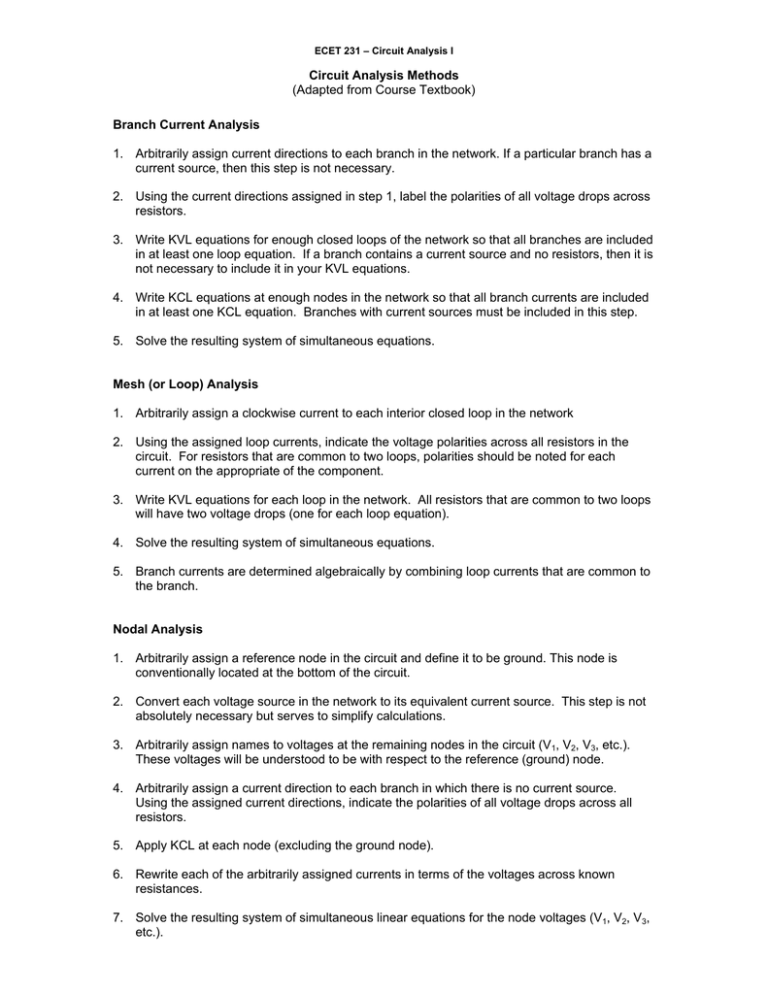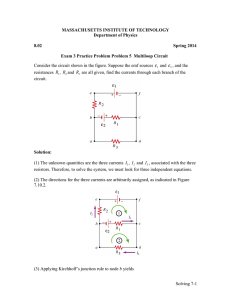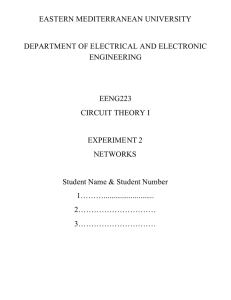Circuit Analysis Methods
advertisement

ECET 231 – Circuit Analysis I Circuit Analysis Methods (Adapted from Course Textbook) Branch Current Analysis 1. Arbitrarily assign current directions to each branch in the network. If a particular branch has a current source, then this step is not necessary. 2. Using the current directions assigned in step 1, label the polarities of all voltage drops across resistors. 3. Write KVL equations for enough closed loops of the network so that all branches are included in at least one loop equation. If a branch contains a current source and no resistors, then it is not necessary to include it in your KVL equations. 4. Write KCL equations at enough nodes in the network so that all branch currents are included in at least one KCL equation. Branches with current sources must be included in this step. 5. Solve the resulting system of simultaneous equations. Mesh (or Loop) Analysis 1. Arbitrarily assign a clockwise current to each interior closed loop in the network 2. Using the assigned loop currents, indicate the voltage polarities across all resistors in the circuit. For resistors that are common to two loops, polarities should be noted for each current on the appropriate of the component. 3. Write KVL equations for each loop in the network. All resistors that are common to two loops will have two voltage drops (one for each loop equation). 4. Solve the resulting system of simultaneous equations. 5. Branch currents are determined algebraically by combining loop currents that are common to the branch. Nodal Analysis 1. Arbitrarily assign a reference node in the circuit and define it to be ground. This node is conventionally located at the bottom of the circuit. 2. Convert each voltage source in the network to its equivalent current source. This step is not absolutely necessary but serves to simplify calculations. 3. Arbitrarily assign names to voltages at the remaining nodes in the circuit (V1, V2, V3, etc.). These voltages will be understood to be with respect to the reference (ground) node. 4. Arbitrarily assign a current direction to each branch in which there is no current source. Using the assigned current directions, indicate the polarities of all voltage drops across all resistors. 5. Apply KCL at each node (excluding the ground node). 6. Rewrite each of the arbitrarily assigned currents in terms of the voltages across known resistances. 7. Solve the resulting system of simultaneous linear equations for the node voltages (V1, V2, V3, etc.).




